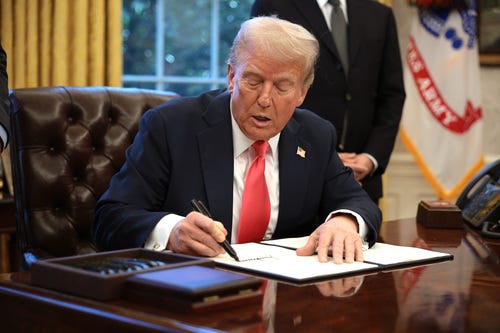
President Trump to Address Congress: A First Look at His Second-Term Agenda
President Donald Trump is preparing to address a joint session of Congress this week, marking his first formal appearance before the legislative body since commencing his second term in the White House. This speech will be a crucial moment for the President to outline his vision for the next four years and to solidify his administration’s agenda.
Traditionally, presidents deliver an annual report to Congress, commonly known as the State of the Union address. This address serves as a comprehensive overview of the nation’s condition, highlighting key achievements, outlining future goals, and proposing legislative priorities. It typically takes place within the first few months of the year and is broadcast to the entire nation, allowing the public to gain insight into the president’s perspective on the country’s direction.
President Trump’s upcoming address is expected to cover a wide range of topics, focusing on the accomplishments achieved since he took office in January and detailing his agenda for the remainder of his term. The speech is scheduled for Tuesday night and will be a significant platform for him to communicate his policy objectives and rally support for his initiatives.
However, it’s important to note that this event will not technically be a State of the Union address. The distinction lies in the timing and context of the speech. House Speaker Mike Johnson extended an invitation to President Trump via a letter, formally requesting him to address a Joint Session of Congress on Tuesday, March 4, 2025. In his letter, Speaker Johnson emphasized the opportunity for the President to share his "America First vision for our legislative future."
The reason it’s classified as a joint congressional address rather than a State of the Union lies in the traditional definition and timing of the latter. The State of the Union is a regularly scheduled annual speech delivered by the president to Congress early in most calendar years. It is designed to provide a snapshot of the current state of the nation and outline the president’s priorities for the coming year. This speech is typically delivered to a joint session of Congress within the House of Representatives chamber.
The tradition of the State of the Union address is rooted in the U.S. Constitution, although it didn’t become a consistent practice until 1913. President Woodrow Wilson revived the tradition and shifted its focus toward emphasizing the nation’s priorities, achievements, and future legislative plans.
Interestingly, the practice of delivering an annual address to Congress dates back to the very first presidents, George Washington and John Adams. However, Thomas Jefferson discontinued the practice, opting instead to submit a written report. Jefferson felt that a formal speech resembled the addresses delivered by the British monarchy, which he believed was inappropriate for the new republic.
Over the years, the State of the Union address has primarily been delivered orally, but there have been instances where presidents have followed Jefferson’s example and submitted written reports. The first televised State of the Union address was given by President Harry Truman in 1947, marking a significant shift in how the president communicates with the nation.
Since President Trump was inaugurated just under two months ago, his speech this week doesn’t qualify as an official State of the Union address. Instead, it follows a precedent set by several recent presidents, starting with Ronald Reagan, who have delivered similar addresses in the months following their inauguration. These speeches serve the same purpose as the State of the Union, allowing the president to outline their agenda and vision for the country.
According to the American Presidency Project (APP), a non-profit and non-partisan website managed by the University of California, there have been seven occasions where new presidents have delivered these "unofficial" addresses. In 1981, President Reagan’s address to Congress was titled "Address Before a Joint Session of the Congress on the Program for Economic Recovery." Presidents George H.W. Bush and Bill Clinton followed suit, delivering speeches titled "Administration Goals" in 1989 and 1993, respectively.
President Trump’s address to Congress on Tuesday evening is scheduled for 9 p.m. ET. Numerous media outlets, including USA TODAY, ABC, Fox News, NPR, and PBS, have announced plans to provide live coverage of the event. This ensures that the public will have ample opportunity to witness President Trump’s address and gain insight into his vision for the country.
This address is significant because it sets the tone for President Trump’s second term. It provides an opportunity for him to reaffirm his commitments to his supporters, present his policy proposals to Congress, and engage in a dialogue with the nation about the challenges and opportunities facing the country. It is a key moment for his administration to establish its priorities and to lay the groundwork for the legislative agenda it hopes to pursue over the next four years.
The speech will undoubtedly be analyzed and dissected by political commentators and the media, and it is expected to spark debate and discussion across the country. It is a moment where the President can define his legacy and set the course for the future of the United States. Given the current political climate, the speech is likely to be closely watched by both supporters and critics, as it will offer a clear indication of the President’s priorities and his approach to governing.
